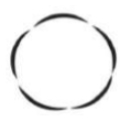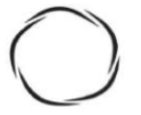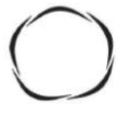Identify the correct statement regarding the stem morphology from the following:
I:
Stems bear only axillary buds.
II:
Axillary buds may get modified into thorns as in Citrus
III:
Stem tendrils develop from axillary buds as in gourds.
1.
Only I and II
2.
Only I and III
3.
Only II and III
4.
I, II and III
The type of placentation show in the given figure is seen in:
| 1. | Dianthus | 2. | Argemone |
| 3. | China rose | 4. | Marigold |
The given floral diagram can be of:
1. Asparagus
2. Atropa belladonna
3. Mustard
4. Indigofera
Match the columns A and B:
| Column I | Column II | ||
| (a) | Marginal placentation | (i) | Marigold |
| (b) | Axile placentation | (ii) | Dianthus |
| (c) | Parietal placentation | (iii) | Argemone |
| (d) | Free central placentation | (iv) | Chinarose |
| (e) | Basal placentation | (v) | Pea |
| (a) | (b) | (c) | (d) | (e) | |
| 1. | (v) | (iv) | (iii) | (ii) | (i) |
| 2. | (v) | (iii) | (iv) | (i) | (ii) |
| 3. | (iv) | (iii) | (v) | (ii) | (i) |
| 4. | (i) | (v) | (iv) | (iii) | (ii) |
An inferior ovary:
| 1. | is situated on the receptacle above the perianth and androecium. |
| 2. | is positioned below the sites of attachment for perianth and androecium. |
| 3. | forms a hypanthium. |
| 4. | is positioned below the receptacle. |
The type of aestivation seen in Calotropis is represented by:
| 1. |  |
2. |  |
| 3. |  |
4. |  |
The floral diagram shown in the given diagram can be of:
1. A plant that produces a chemical that can disrupt mitotic spindle
2. Deadly night shade
3. Indigofera plant, a source of dye
4. A pulse plant
The region responsible for growth in the length of the root is:
1. A
2. B
3. C
4. D
is the floral formula of
1. Allium
2. Sesbania
3. Petunia
4. Brassica
Keel is the characteristic feature of flower of
1. tulip
2. Indigofera
3. Aloe
4. tomato










